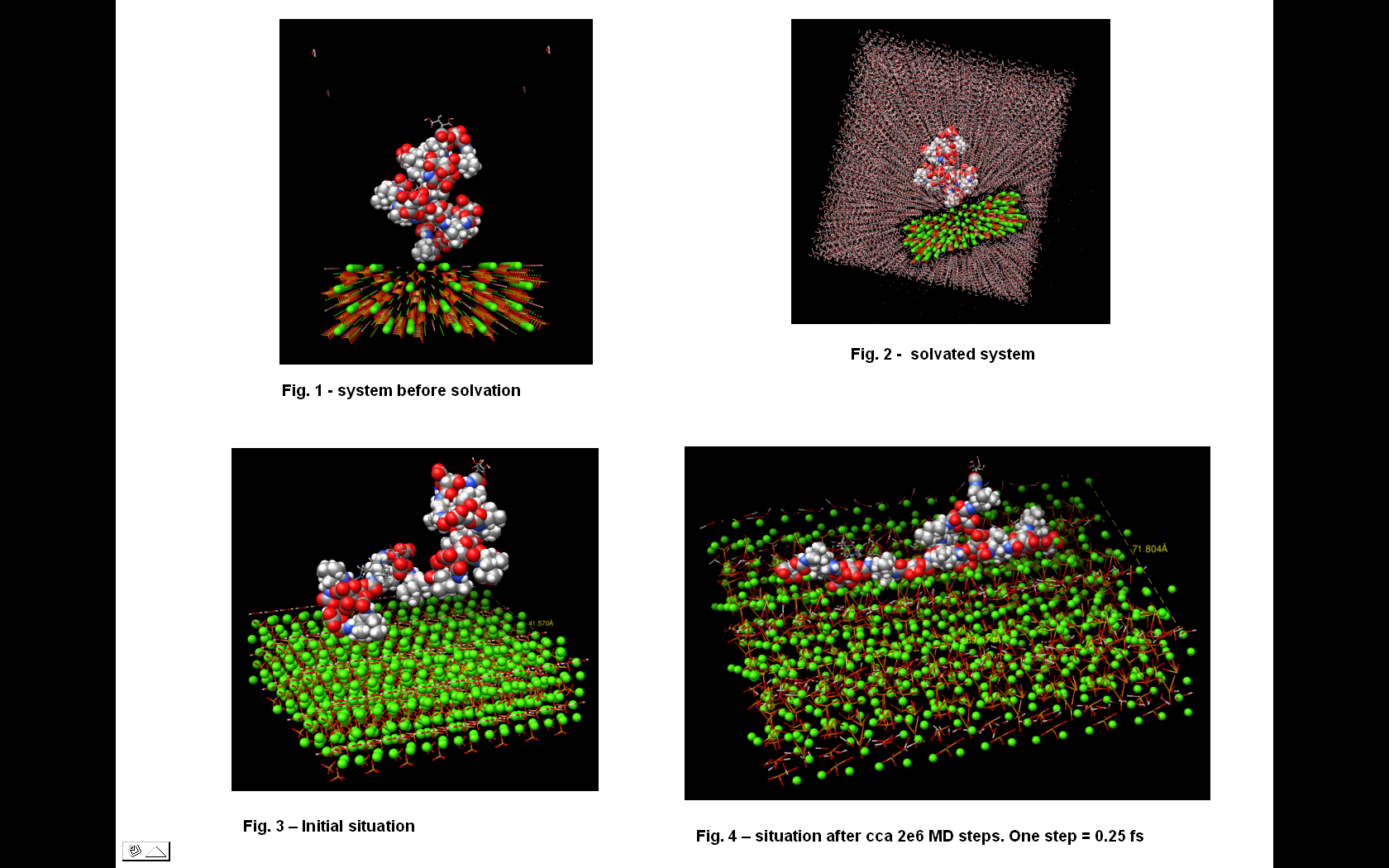Date: Tue, 03 Aug 2010 20:35:28 +0200
Dear all,
I am trying to simulate interaction between hydroxyapatite (HA) and given
polyurethane (PU).
I successfully constructed and parametrised my system but I still have
some particular problems and
I would be very grateful for your advices here.
Problem #1
The most important problem is surface stabilisation during NPT simulation.
I would like to fix (if possible) all atoms of the surface during
simulation.
If this is not possible (because of changes of simul. box volume during
NPT run) I would like
at least prevent the crystal atoms from disordering. It means that small
PROPORTIONAL changes
in distances between surface atoms are not the problem but disordering of
atoms of the surface
indeed problem is because it changes surface structure which in turn
affects significantly interaction with my polymer.
For my first attempt I used "ibelly = 1" constraint with old definition of
bellymask since I naturally wanted to use
pmemd for production run.
The *.in files (minimisation, heating, density equil., prod. run) are
attached.
Using this strategy I obtained relatively promising result with the
polymer nicely condensed on the surface
but unfortunately all the HA surface atoms were during the simulation
partially disordered. Moreover overall dimensions of the crystal
changed from original cca 45A x 52A x 13A to final cca 75A x 89A x 18A.
This change is illustrated on attached picture Illustrations.png (please
see there Fig. 3 and Fig. 4)
So where is the problem ? Did I some mistake in "*.in" files or is belly
constraint unsuitable here and is better
to use harmonic RESTRAINT with very high "restraint_wt" value ? Or is
there any other choice ?
problem #2
For this kind of simulation one would probably prefer simulation box where
the crystal surface is on the bottom side
of the box with lateral sides perpendicular to this surface so the water
is only above the surface (or also under but just very small layer like
5A) in perpendicular direction.
I wanted to achieve this by placing 4 molecules of H2O in the upper
coroners of such "hypothetical box" (please see attached
Illustrations.png ( see there Fig. 1 ) and using 0 A spacing )(in the
picture I used spacing 5A). But the result after solvation is not
in agreement with my expectation as it is clear from Illustrations.png (
see there Fig. 2 ).
Is there any trick to achieve above desired simul. box orientation
regarding the crystal surface ?
For example is it possible to define explicitly some of the box dimensions
?
problem #3
As I mentioned above I used old style for specifying belly residuies to
allow constraint calculation in pmemd.
Unfortunately pmemd (in Amber 10) has problem to accept individual H
atoms. In hydroxyapatite there are H atoms
as the parts of OH groups, but since Materials Studio has his specific
way/order in writing atoms of crystals into PDB I
decided to use for each type of atom one corresponding residuum however I
parametrised all atoms inside their natural
groups in HA so for example H residuum I parametrised in antechamber as a
part of OH group.
There is no such problem for P,O and Ca atoms just for H so at the end I
have to use sander (here is no such problem)
for the whole simulation. So my question is : Is this pmemed restriction
present also in Amber 11 ?
If yes, why (again in sander there is no such restriction) ?
Thanks a lot in advance for any advices/comments !
Best wishes,
Marek
_______________________________________________
AMBER mailing list
AMBER.ambermd.org
http://lists.ambermd.org/mailman/listinfo/amber

(image/png attachment: Illustrations.png)
- application/octet-stream attachment: prod_HA_PU.in
- application/octet-stream attachment: density_HA_PU.in
- application/octet-stream attachment: heat_HA_PU.in
- application/octet-stream attachment: min1_HA_PU.in
- application/octet-stream attachment: min2_HA_PU.in
